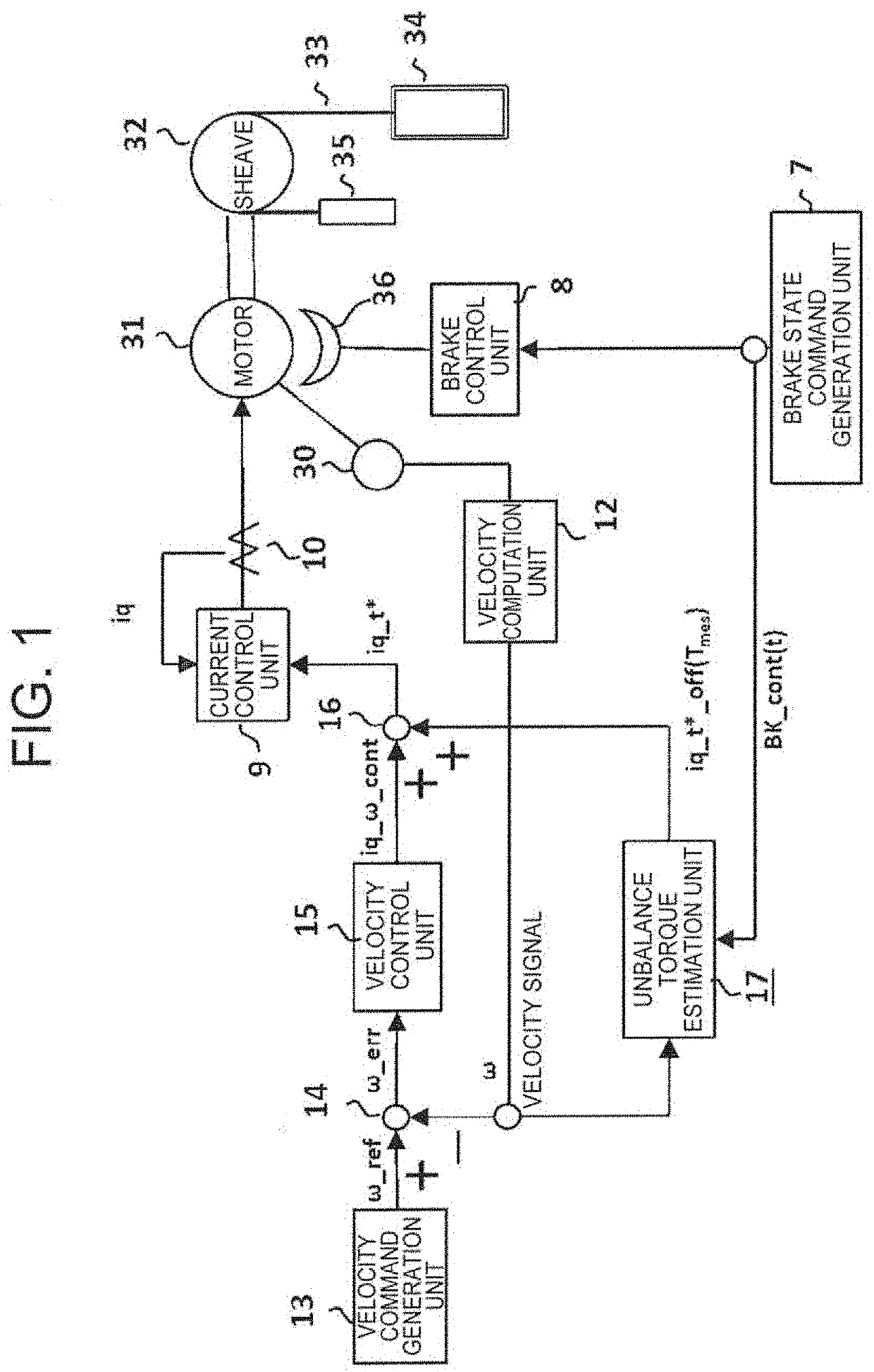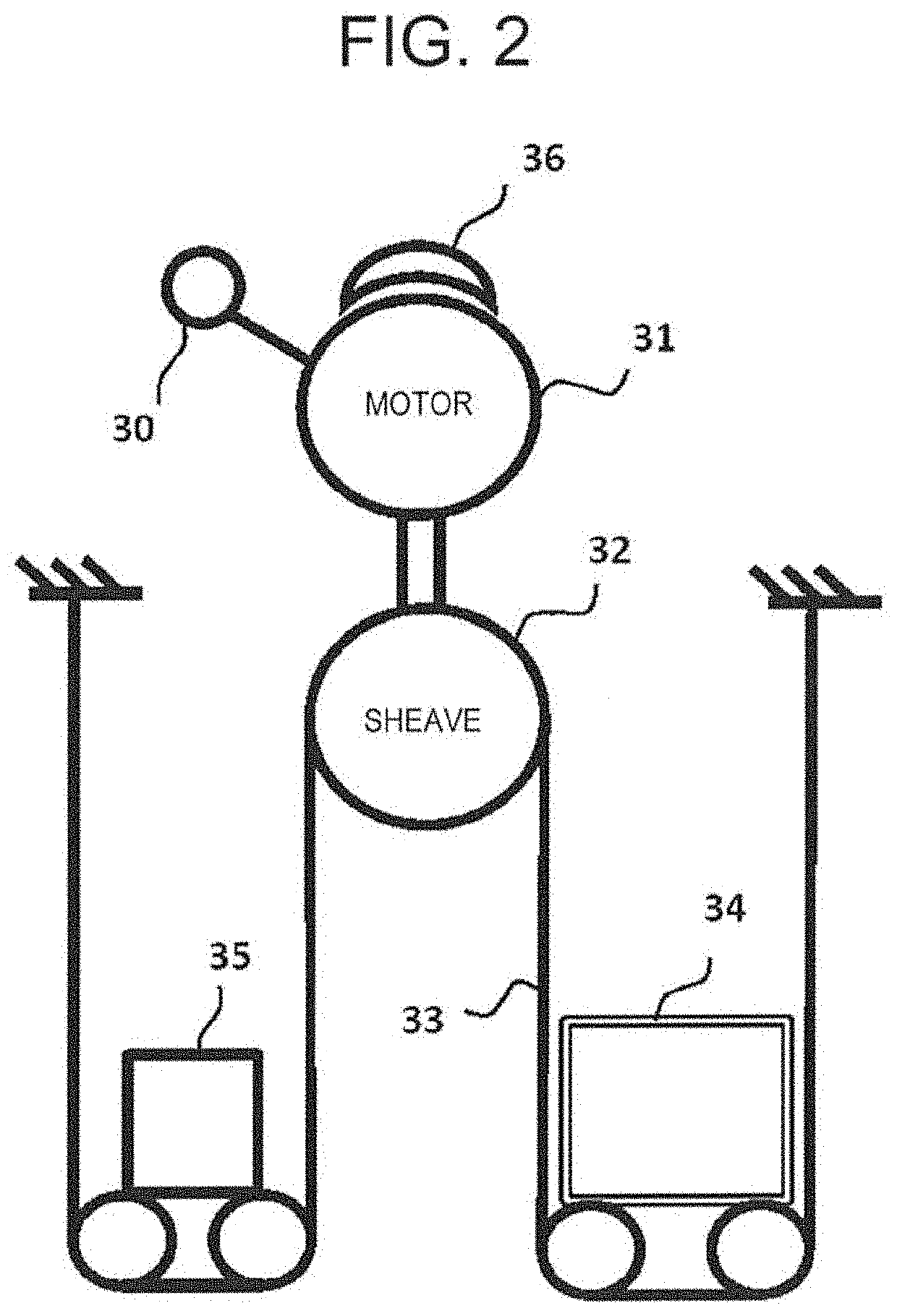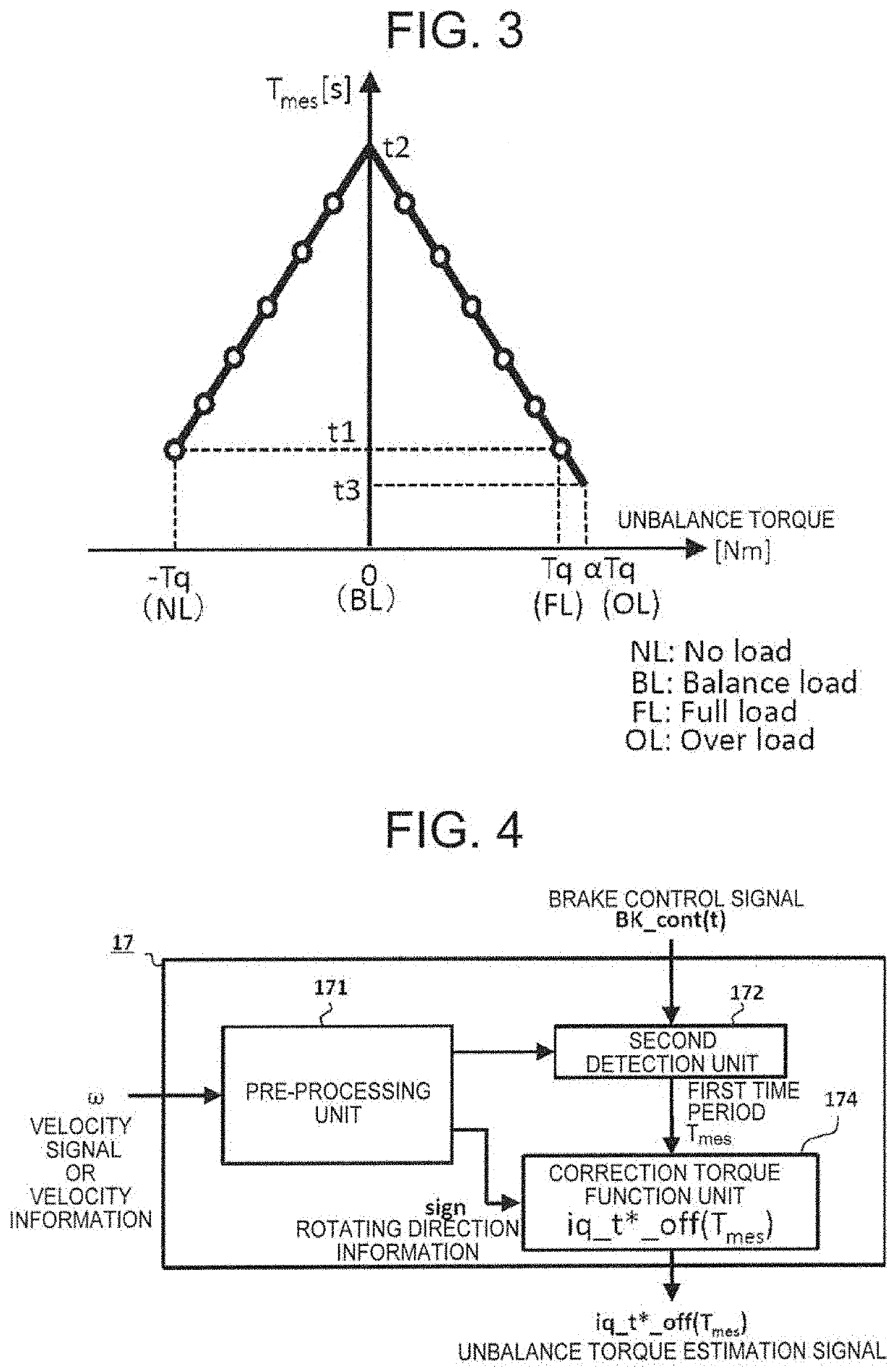Elevator control device
a control device and elevator technology, applied in elevators, transportation and packaging, etc., can solve the problems of unbalance torque, affecting the stability of the elevator, so as to reduce the calculation load and suppress the influence of unbalance torque. , the effect of sufficient responsiveness
- Summary
- Abstract
- Description
- Claims
- Application Information
AI Technical Summary
Benefits of technology
Problems solved by technology
Method used
Image
Examples
first embodiment
[0026]FIG. 1 is a diagram for illustrating a configuration of an elevator control device according to a first embodiment of the present invention. A sheave 32 is connected to a rotary shaft of a motor 31. A rope 33 is looped around the sheave 32. The rope 33 has one end connected to a car 34, and the other end connected to a counterweight 35. As a result, the car 34 and the counterweight 35 are suspended through use of the rope 33 in a traction system with respect to the sheave 32. The rope 33 is not limited to a rope having a circular cross section, and includes, for example, a rope having a belt shape. An encoder 30 configured to detect an angle is connected to the motor 31 to which the sheave 32 is connected. With this encoder 30, angle information related to a rotational angle of the motor 31 can be obtained. A velocity control system is formed based on this angle information.
[0027]In this case, an elevator mechanical system is formed of components denoted by reference symbols 3...
second embodiment
[0069]The elevator control device according to the first embodiment of the present invention has a configuration effective with respect to a case in which, for example, the characteristic of the brake 36 is not greatly changed. In contrast, an elevator control device according to a second embodiment of the present invention is configured to suppress the start shock and the rollback to be small even when, while the elevator system is in operation, the characteristic of the brake 36 is changed by being affected by temperature or the like.
[0070]FIG. 9 is a diagram for illustrating the elevator control device according to the second embodiment of the present invention. The elevator control device according to the second embodiment of the present invention is directed to an elevator control device assuming a case in which the brake 36 has a characteristic change. In FIG. 9, a part of the unbalance torque estimation unit 17 in the first embodiment illustrated in FIG. 1 is replaced with an...
PUM
 Login to View More
Login to View More Abstract
Description
Claims
Application Information
 Login to View More
Login to View More - R&D
- Intellectual Property
- Life Sciences
- Materials
- Tech Scout
- Unparalleled Data Quality
- Higher Quality Content
- 60% Fewer Hallucinations
Browse by: Latest US Patents, China's latest patents, Technical Efficacy Thesaurus, Application Domain, Technology Topic, Popular Technical Reports.
© 2025 PatSnap. All rights reserved.Legal|Privacy policy|Modern Slavery Act Transparency Statement|Sitemap|About US| Contact US: help@patsnap.com



